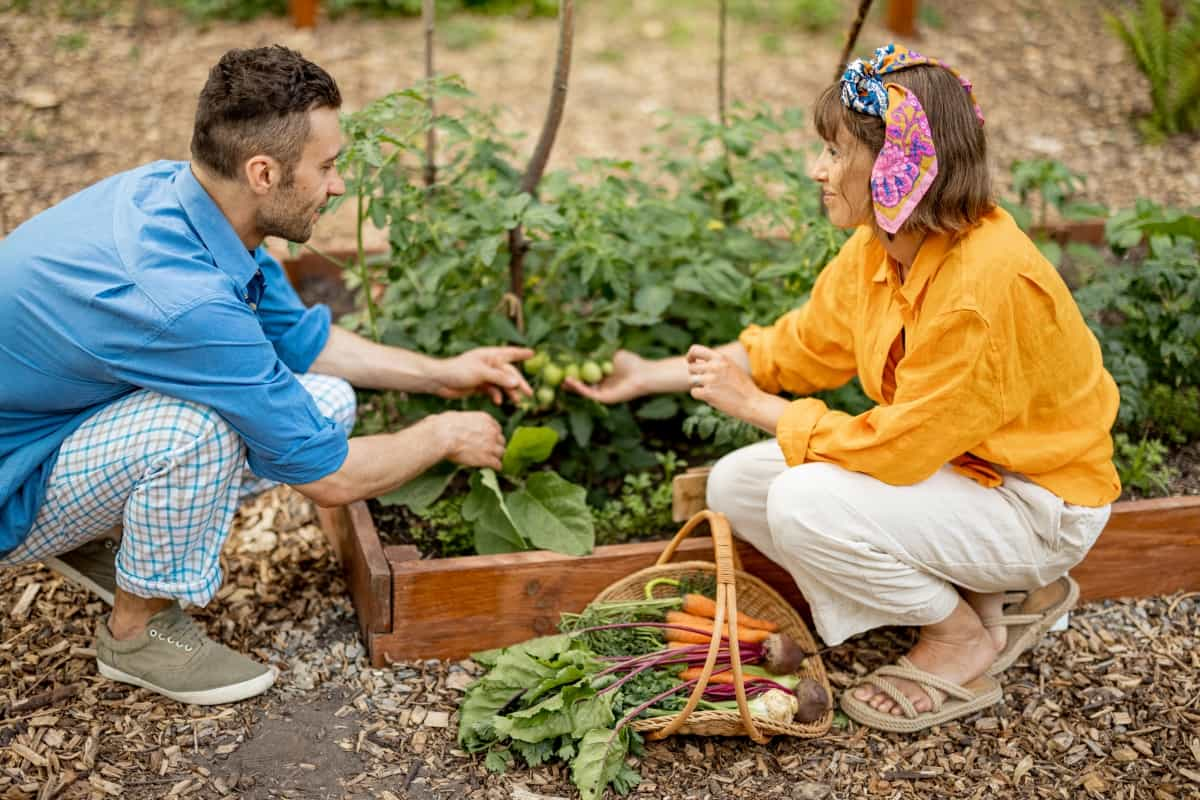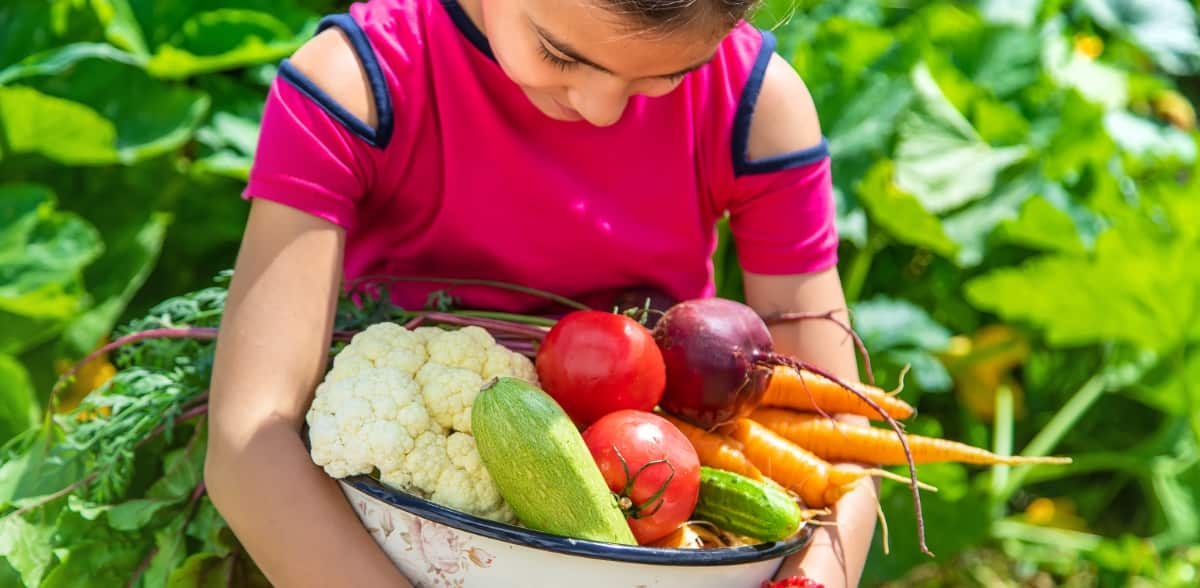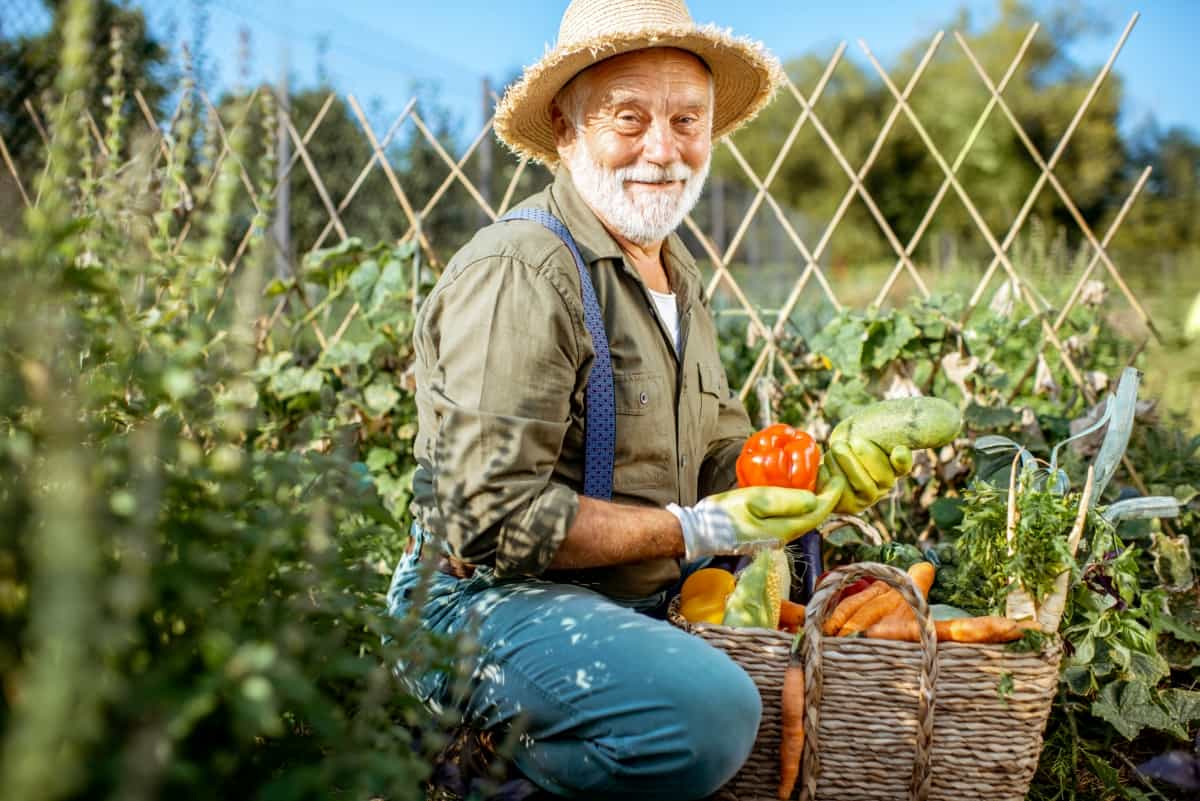Maryland offers a rich tapestry of climate zones, making it a diverse region for gardening enthusiasts. Many often ask, “Is Maryland good for vegetable gardening?” The answer is a resounding “Yes!” Thanks to its varied climate, a Maryland vegetable planting calendar spans throughout the year. In this guide, we’ll uncover what vegetables are easy to grow in Maryland and dive into the nuances of starting a vegetable garden in Maryland. This guide covers everything from knowing when to plant tomatoes in Maryland to adopting sustainable practices.

Easy and Best Vegetables to Grow in Maryland
Best Vegetables to Grow in Maryland’s Summer Season: Tips and Recommendations
Summer in Maryland boasts warm temperatures and long days, providing ideal conditions for various vegetables. Tomatoes, a staple in many gardens, should be planted in late spring to early summer. Places like Baltimore and Annapolis often experience ample sunlight, perfect for peppers, zucchinis, cucumbers, and beans. Keep these vegetables well-watered and provide a trellis or support for climbers to ensure optimum yield. Regularly check for pests and ensure the plants receive at least 6-8 hours of direct sunlight daily.
Top Winter Vegetables for Successful Gardening in Maryland: A Planting Guide
Maryland’s winter, especially in areas like Frederick and Hagerstown, offers a unique opportunity for vegetable growers. Vegetables like broccoli, cauliflower, and Brussels sprouts thrive in cooler temperatures. Ensure the soil drains well, and protect your plants from frost with a mulch or garden fabric layer. Regularly check soil moisture and protect plants from harsh, prevalent winds, especially in open spaces.
Spring Vegetable Planting Guide for Maryland: Easy and Productive Choices
Spring, the season of renewal, brings forth a bounty of vegetable choices for Maryland gardeners. When considering when to plant vegetables in Maryland during this season, opt for lettuce, spinach, and radishes. These grow quickly and can be harvested before the full heat of summer kicks in. In cities like Rockville and Bethesda, ensuring that your spring vegetables get adequate water and protection from late frosts is essential.
Understanding Maryland’s Climate and Soil Conditions for Successful Vegetable Gardening
Maryland’s climate is primarily humid subtropical but varies from coastal areas like Ocean City to more mountainous regions in the west. The state’s soil predominantly consists of loamy and sandy textures. Adjustments, such as adding compost, can help in improving soil health. Regular soil tests ensure your garden gets the right nutrients, guaranteeing a productive yield irrespective of the season.
Organic Vegetable Gardening in Maryland: Sustainable Practices for Healthy Yields
Adopting organic practices ensures that the food you grow is free from harmful chemicals. This includes using natural fertilizers and compost and promoting beneficial insects. By avoiding synthetic pesticides and fertilizers, you not only protect your health but also contribute to a sustainable environment. Utilizing agricultural methods such as crop rotation and companion planting can effectively enhance your garden’s vitality and productivity.
In case you missed it: Easy and Best Vegetables to Grow in Wisconsin: Planting Guide for Summer, Winter, and Spring

Container Gardening in Maryland: Growing Vegetables in Limited Spaces
For those with limited yard space in urban areas like Silver Spring, container gardening is a boon. Vegetables such as tomatoes, peppers, and herbs can be grown successfully in pots. Please ensure your containers have proper drainage and utilize a potting mix tailored for container plants. Position containers where they’ll get the right amount of sunlight and keep them well-watered.
Companion Planting Guide for Maryland Vegetable Gardens: Maximizing Growth and Minimizing Pests
Companion planting involves placing plants together that benefit each other. For instance, tomatoes and basil are companions as basil helps repel pests that affect tomatoes. Another example includes planting marigolds with vegetables; their scent deters nematodes and other pests. By understanding which plants support each other, Maryland gardeners can ensure healthier plants and better yields.
Month-By-Month Vegetable Calendar for Maryland
| Month | Vegetables to Plant |
| January | Garlic (if not done in fall), Onions (seeds indoors) |
| February | Lettuce (seeds indoors), Broccoli (seeds indoors), Cabbage (seeds indoors), Peas (direct sow late month if the soil is workable) |
| March | Lettuce, Spinach, Radishes, Peas, Turnips, Potatoes, Kale, Swiss chard, Cauliflower (indoors), Tomatoes (indoors) |
| April | Beets, Carrots, Lettuce, Spinach, Onions (transplants), Cabbage, Broccoli, and Cauliflower (transplants), Peppers, and Eggplants (indoors) |
| May | Beans, Sweet Corn, Cucumbers, Summer Squash, Tomatoes (transplants), Peppers and Eggplants (transplants), Okra, Pumpkin |
| June | Beans, Sweet Corn, Cucumbers, Okra, Summer Squash, Winter Squash, Melons |
| July | Beans (early month), Broccoli (for fall harvest), Cabbage (for fall harvest), Cauliflower (for fall harvest), Brussel Sprouts (for fall harvest) |
| August | Lettuce, Radishes, Turnips, Spinach (late month), Beets, Carrots, Broccoli, Cauliflower, Cabbage, Swiss chard, Kale |
| September | Spinach, Radishes, Turnips, Lettuce, Garlic (for next year) |
| October | Spinach, Radishes, Garlic (if not done in September), Overwintering Onions |
| November | – (Begin preparing beds for spring and consider planting cover crops) |
| December | – (Winter care, mulching, and planning for next year) |
Remember to rotate your crops to avoid soil-borne diseases and pests. Always check local planting guides or consult a local nursery or agricultural extension for the most accurate information.
In case you missed it: Best Vegetables to Grow in Pennsylvania: Planting Guide for Summer, Winter, and Spring Gardening

Watering Techniques: Quenching Your Garden’s Thirst the Right Way
Water is the lifeblood of any garden, but how and when you water can significantly impact the health and yield of your plants. Regular and deep watering is crucial in Maryland’s humid subtropical climate, especially during dry spells. Early morning watering is ideal as it allows plants to absorb moisture before the day’s heat and reduces water loss due to evaporation.
Avoid overhead watering in the evening, which can lead to fungal diseases. Instead, opt for soaker hoses or drip irrigation systems. These deliver water directly to the plant’s base, ensuring deeper root penetration and less water wastage. It’s essential to ensure that the soil is moist but not soggy. Overwatering can be as bad as underwatering, leading to root rot and other issues.
Pest and Disease Management: Guarding Your Green Sanctuary
Every gardener in Maryland, from Gaithersburg to Bowie, faces the challenge of pests and diseases at some point. The key is proactive management. Regularly inspect plants for signs of insect damage or disease. Caterpillars, aphids, and beetles can be removed manually or with a blast of water. For persistent pests, consider natural predators like ladybugs or praying mantises.
Neem oil and insecticidal soaps are organic solutions for many pest problems. As for diseases, practicing crop rotation, ensuring proper spacing for air circulation, and avoiding watering plant leaves can significantly reduce the risk. If a plant does get infected, remove it immediately to prevent the disease from spreading.
Conclusion
With its distinct climatic zones and rich soil, Maryland stands as a gardener’s paradise, offering opportunities to cultivate various vegetables across the seasons. Though demanding, the journey, from soil preparation to the joyous harvest, provides an unmatched satisfaction of reaping what one sows.
In case you missed it: Best Vegetables to Grow in Colorado: for Summer, Winter, Spring, and Fall Seasons

By understanding Maryland’s unique climate, making informed choices based on the vegetable planting calendar, and incorporating sustainable and organic practices, residents can turn their garden spaces, expansive backyards, or compact containers into flourishing edible landscapes.
- Ultimate Guide to Ossabaw Island Hog: Breeding, Raising, Diet, and Care
- Ultimate Guide to Juliana Pig: Raising Facts, Size, Diet, Care, and Lifespan
- Raising Lleyn Sheep: Disadvantages, Price, Uses, Characteristics, and Care
- Ultimate Guide to Meishan Pig: Breed Facts, Breeding, Raising, and Care
- Ultimate Guide to Teacup Pigs: Raising, Diet, Lifespan, Cost, and Care
- Guide to Raising Poll Dorset Sheep: Facts, Profile, Characteristics, Uses, and Care
- Ultimate Guide to Bighorn Sheep: Characteristics, Diet, Lifespan, Breeding, and Lifecycle
- Ultimate Guide to Raising Katahdin Sheep: Farming Facts, Breed Profile, Uses, and Care
- Ultimate Guide to Raising Oreo Cows: Belted Galloways Farming Facts, Profile, Uses, and Care